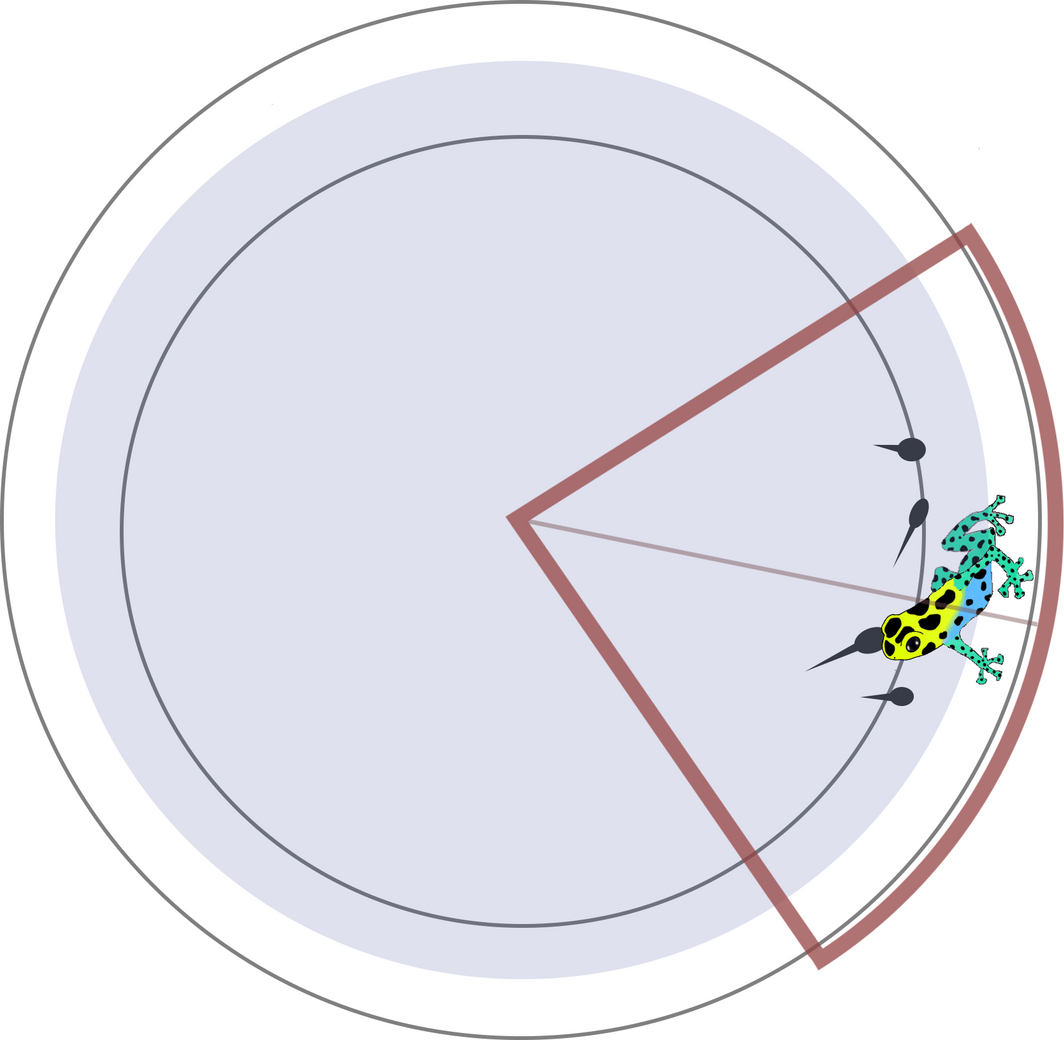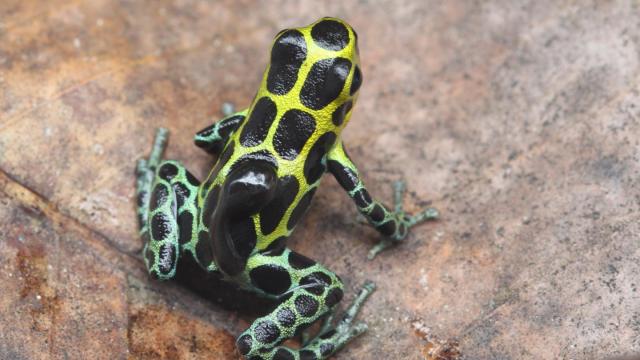Splash-back poison frogs (Ranitomeya variabilis) are generally devoted parents, with the amphibian dads taking on the bulk of the childcare responsibilities. But when the frog fathers skip out on their young, it’s every tadpole for themselves, and that means a horrifying cannibalistic melee from which only one young frog emerges.
The doting male frogs generally separate their young to keep them safe — from each other. Photo Credit: Lisa Schulte
Like many poison frog species, splash-back poison frogs spend a lot of time and effort caring for their offspring. The female lays her eggs in a small puddle of water, such as the fluid that collects at the base of a leaf (called a phytotelm), to help ensure they aren’t exposed to predators. After the eggs hatch, the doting dad hoists his little tadpoles onto his back, carrying them around in search of suitable nursery pools. Each young frog is placed in its own little aquatic oasis, nurtured tenderly as it grows and develops.
Because such cases of extensive parental care are rare outside of mammals and birds, scientists like to study poison frogs to learn more about parent-child interactions. But as biologists Lisa Schulte and Michael Mayer of Trier University in Germany learned doing field research in Peru, these frogs aren’t always the portrait of parenthood they were thought to be. For reasons somewhat unclear, sometimes froggy fathers flaked, abandoning their entire brood of two to six tadpoles together in the same micropond.
The results were gruesome, with tadpoles first fighting over what little food happened to be available. As resources dwindled, those weakened by starvation fell victim to the most robust sibling, until in all cases, only one tadpole remained. “I never found a phytotelm that started out with several tadpoles but ended with more than one survivor,” Schulte told Gizmodo.

Carrying each tadpole takes a lot of effort on the father frog’s part. Photo Credit: courtesy of the Journal of Zoology.
Cannibalism isn’t rare in frogs — in fact, one of the ways poison frog parents feed their nurtured young is by tossing smaller tadpoles into their baby’s pools to be consumed. But scientists wondered if the abandoned froglets displayed unique behaviours. So, they recreated the Lord of the Flies conditions in a makeshift lab at a coffee plantation near their field site.
Fifteen clutches of eggs were collected and hatched by the scientists in small plastic bowls. At first, each tadpole brood was filmed swimming about on its own for 30 minutes. Then, over the following days, a series of test frogs were placed in the simulated pools, including both male and female frogs of the tadpoles’ species, as well as frogs of other species, and even 3D printed frog models. The pair filmed the tadpoles’ behaviour for 30 minutes each time to see how the young reacted.
The researchers predicted the tadpoles would swim towards males of their own species, hoping it was dad coming back to rescue them. But the terrified tadpoles were desperate, seemingly aware that a grotesque fight for survival lay ahead should they remain with their siblings. They reacted to each living frog with “extremely fast and vigorous behaviour” including “a strong, nearly aggressive form of approaching and mounting,” the researchers explain in a recently published paper in the Journal of Zoology.
It didn’t matter if the frog in question was male, female, or even a completely different species — the tadpoles swam robustly towards any adult frog and attempted to escape onto their backs, even though the adults didn’t assist in any way. The only frogs the tadpoles didn’t attempt to mount were the plastic models, suggesting chemical signals may help the tadpoles discern when a frog enters their pool.
Jason Brown, a poison frog biologist from Southern Illinois University who was not involved with the study, said the findings may help explain a mystery from his own field work, “the rare, random appearance of a very large R. variabilis tadpoles into previously empty aquatic nurseries or nurseries with much smaller tadpoles”.
“It appears that these tadpoles are ambitious hitchhikers, a clearly dangerous endeavour, which occasionally results in great rewards: An unoccupied nursery or, even better, an occupied nursery with a smaller, edible tadpole,” Brown told Gizmodo. “Talk about making the best of out a bad situation.”
“Overall, the results of this study change our perspective of the role tadpoles might play during parent-offspring interactions in poison frogs,” the researchers conclude. They plan to further study the behaviour of abandoned tadpoles, hoping that examining these amphibians will lead to a better understanding of parental relationships in animals in general.
Meanwhile, I guess we can all be grateful our siblings didn’t try to eat us when our parents went out for the night.
